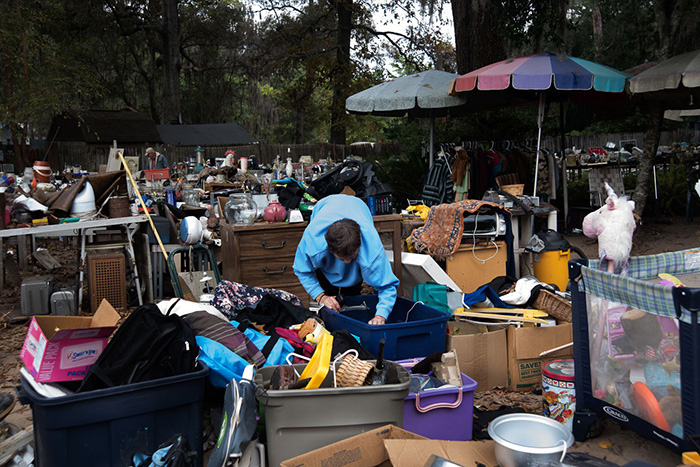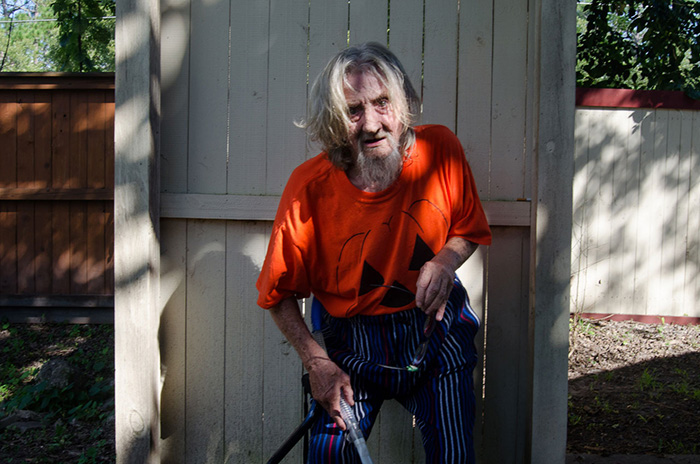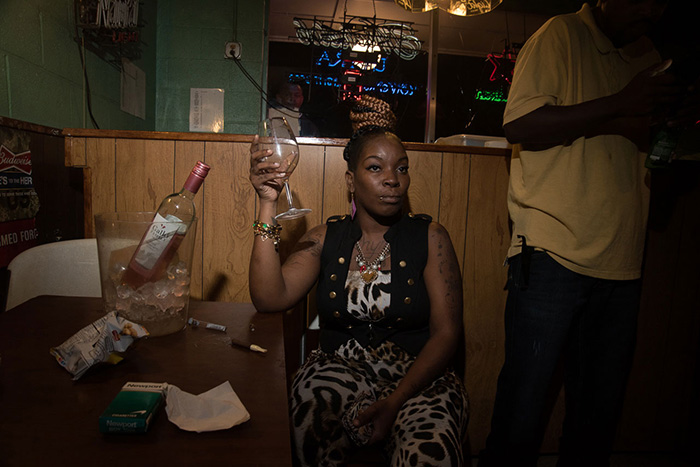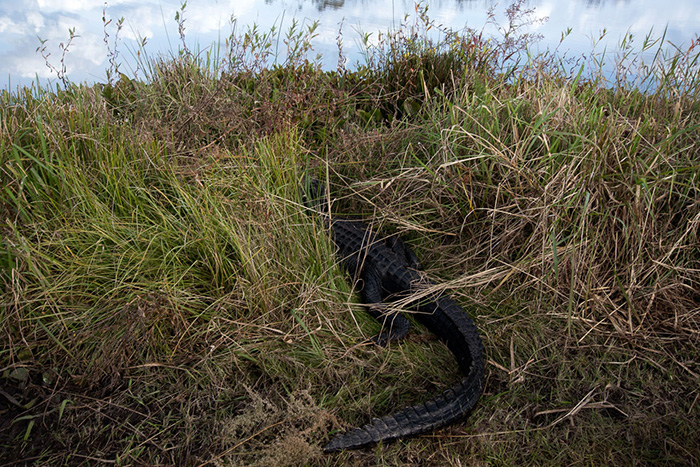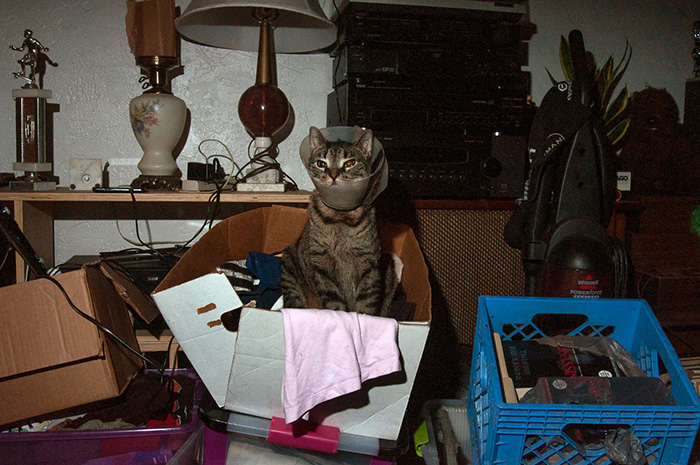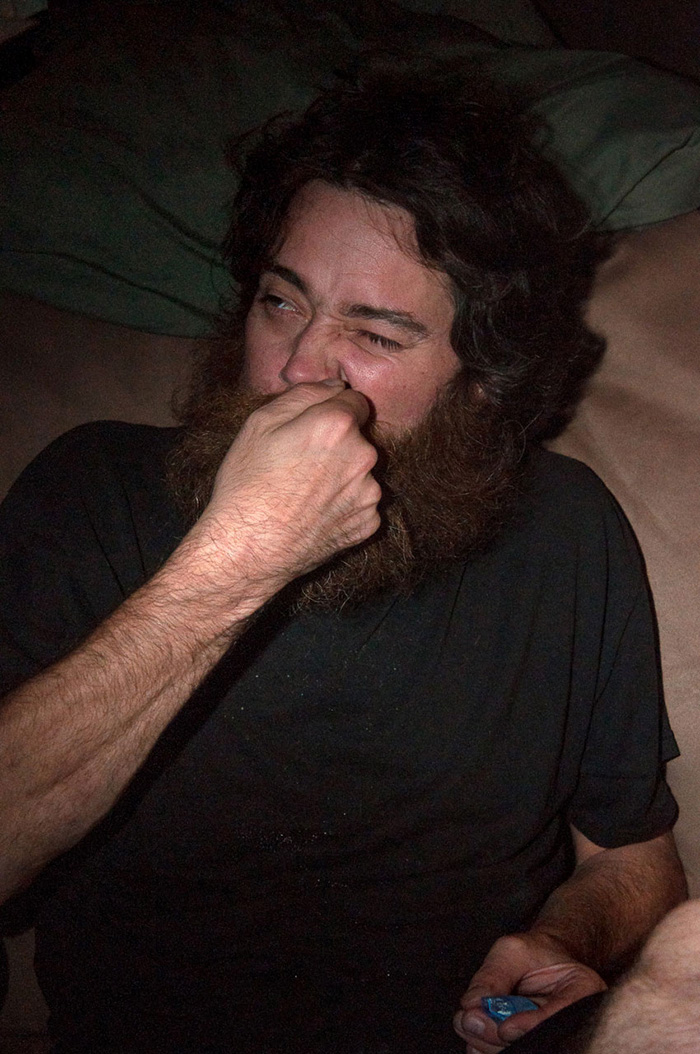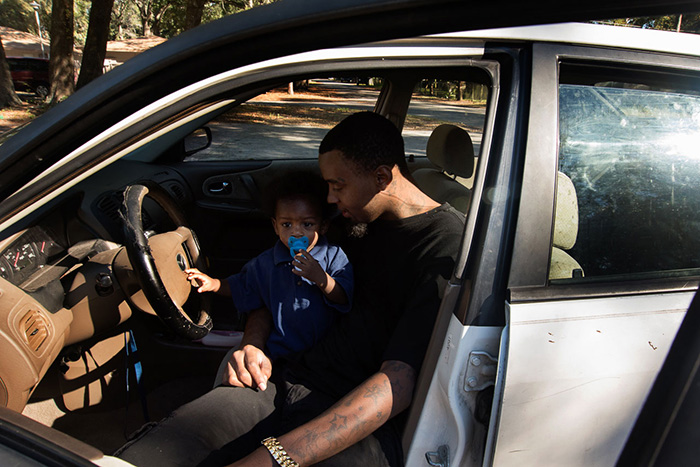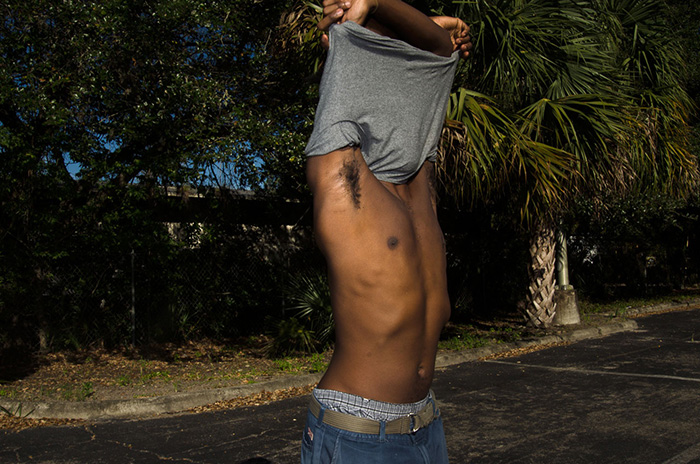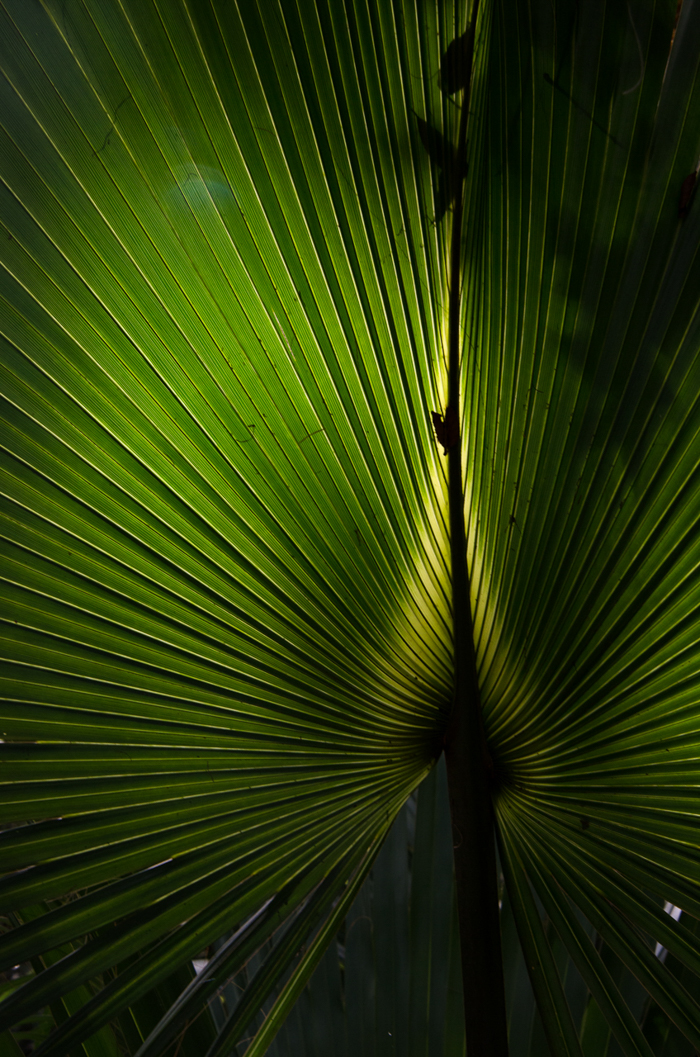Interview: Stacy Kranitz, A New Humanism
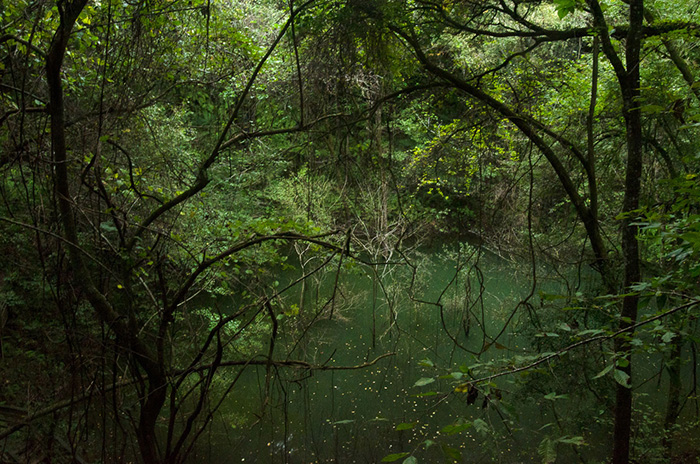
Stacy Kranitz spent some time photographing people she met in Gainseville, a little town in Northern Florida. She didn’t have a specific plan when she first moved there, invited by a gallery to spend her 12-week residency working in the area. She wanted to be inspired by that humanity of Floridians that lately seems to have been attracting so many young artists from all over the country. The result is a series called Once Entangled With It, No Other Place Seems Possible To Us (from Marjorie Kinnan Rawlings’ memoir) and is a stunning and precious one. Every single shot feels just essential. Once Entangled With It.. is one of those projects that doesn’t make you overthink; your eyes are so glued to those humid places that people live in and share with alligators – which in the project become the alter ego of the photographer herself, hidden and patiently waiting for something to happen before her eyes. And the time goes by so fast that in a second you are looking at the last image of the project and you feel like you have learned something. Or maybe you have just felt something new and that is something only few photographs can still do.
Stacy’s images are theatrical, in a philosophical way. In fact, they are a celebration of life and death – something so inherent in the photojournalistic genre and at the same time two very difficult elements to balance together when working within the medium’s rules. But she does it proficiently, keeping the viewer always balancing a tightrope between tragedy and joy. It is not a coincidence that her images bring us back to the work of great artists such as Diane Arbus, Eugene Smith and Larry Clark’s beautiful Tulsa. And this is probably one of the reasons why we look at these images so naturally. We don’t expect to reach a new degree of truth while looking at them. The understanding of a slice of humanity is the point of the work, not informing or educating us about a problematic society or a specific behaviour. Here, we just feel sympathetic with the subjects because they are human.
They could be us.
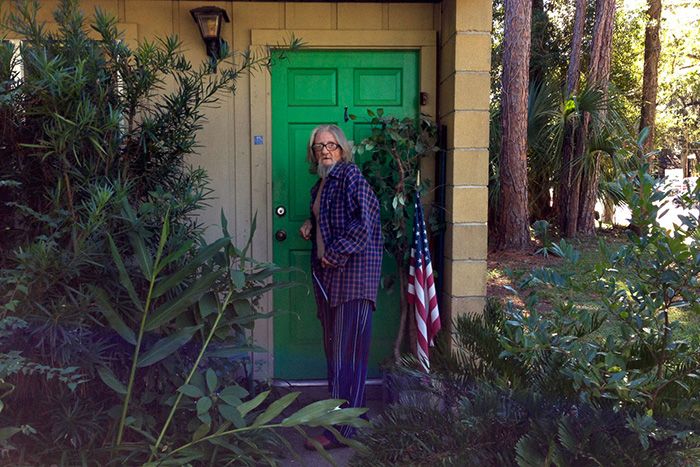
I would like to talk about your project ONCE ENTANGLED WITH IT, NO OTHER PLACE SEEMS POSSIBLE TO US, which you made when you where part of a 12 weeks art residency in Gainesville, Florida. I know it might sound weird, but before we talk about the series itself I’m really interested to know how you would describe Florida as a state and a source to gain inspiration from. I’m asking you this also because lately I’m noticing that so many photographers and artists are drawn to Florida, which weirdly becomes a symbol for a specific representation of American life. How was it to live in Florida for 12 weeks?
Florida is endlessly fascinating. It was wonderful to have an opportunity to really spend time in a place I was completely unfamiliar with. Florida is a truly dynamic place but it would be naïve for a photographer or viewer to see it as representative of American life any more than any other place in America. It is much larger than most states and this makes it that much more diverse in terms of its history, geography and culture. Most places that I go to photograph have a legacy of photographic representation. Photography has been around long enough for there to be a rich history of image-based depiction in every region of the world. I found the trajectory of writers and photographers depicting life in north central Florida an important influence. In this project, I parlay my visual representation of the region with a writer who came to the area as an outsider (like myself), Marjorie Kinnan Rawlings. I appropriated titles for each image from her writings about the region. The title of the project came from her memoir Cross Creek.
At first, the places and people depicted in your photographs seem sometimes grotesque. I feel attracted to them but at the same time I feel uncomfortable looking at them for too long. But at a second glance I see my attitude changing. And I realize that they are not telling me any specific truth. They are not trying to teach me anything in particular to get my attention and show me the disadvantaged of that community. I see them working more like shreds of time, that thanks to photography you pulled out of their original context and isolated, or framed them in a brand new context. What do you think about this idea? Do you think they can work as single photographs too or they must be in a series? How do you see truth? And, by the way, do you think photography is able to tell true stories? How important (if at all) is this power of de-contextualization?
As a society, we no longer see photography as having a truth revealing mechanism and so as a photographer I no longer rely on this aspect of the photograph to guide the audience to essential truths. I want my images to operate within and outside of their context. I’d like them to stand alone as independent images that evoke emotion or conjure memory as well as work together to build a larger understanding of the human condition. There is an extensive amount of context built into the exhibition of these images as they were shown in the gallery installation. I made guidebooks and numbered the images and objects on display. Each had a corresponding title that potentially opened up the image to a larger meaning that I hoped would congeal into a deeply entrenched look at the region from the perspective of an outsider. But I don’t think it is useful to force the viewer into this place. I want to give them the choice to have a deeper experience with the layering of historical information, objects and images or a more impulsive and carnal relationship with a photograph or group of photographs.
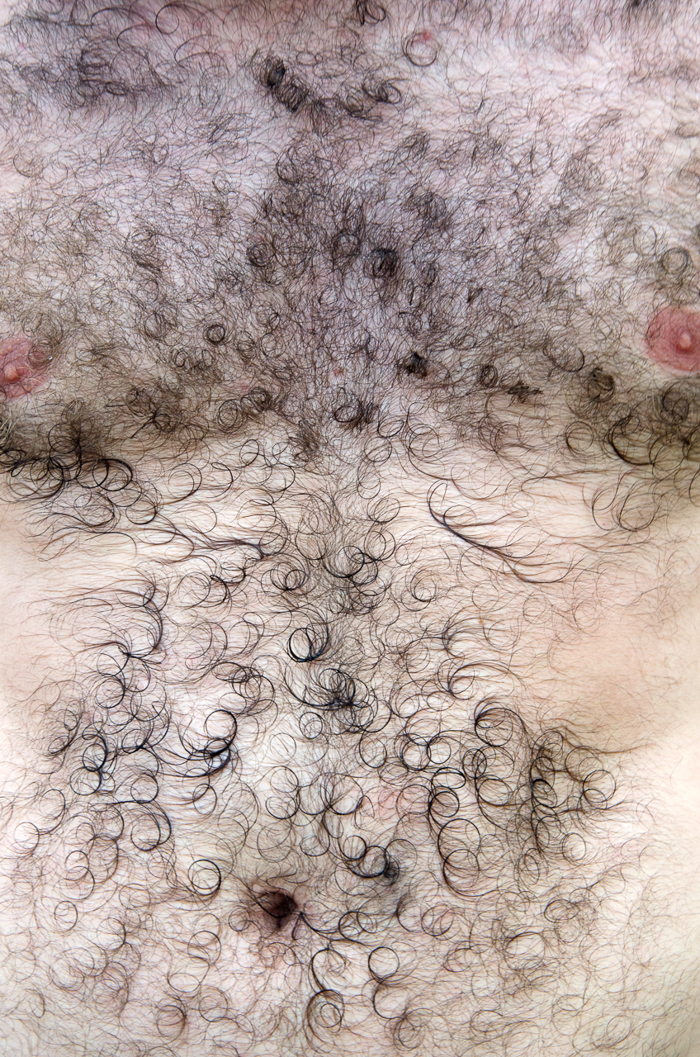
The images of the alligators are particularly important in the series. They are often hidden in the lush of Floridian landscape; we see their face just once in your edit. These animals bring a sense of danger to the whole series, the feeling that a catastrophe is not there yet but might happen at any time. In fact your photographs don’t look like they are still in time. Your images are not frozen moments, in the romantic sense of photographic representation. We feel – as viewers – that your subjects are growing and living and changing and that a moment after the shot you have taken they could already be gone. What you are telling us is just a really little part of the picture, not the whole story. This allows you to introduce a fictional element to something that at first seems so documentary-driven. What do you think of this power you have of inserting a sort of imaginative element completely detached from the reality you have in front of your camera? And what about that feeling of danger we always have inside while we are looking at the series?
I was looking for a visual metaphor that described the experience of making images as a photographer. In Gainesville there are several places you can go and be in close proximity to Alligators. I found myself revisiting those places many times during my 12-week stay. I saw an interesting parallel to my behavior and experience as a photographer. We both lurked, hid, tried to fit into the landscape waiting for the thing we wanted to appear.
I think my own fantasies about a place seep into the images in many ways. My own imagination and affect based relationship to a place all contribute to a detachment from the reality of what is in front of the camera.
I’m not completely sure where the danger comes from. I think it has to do with a very personal internal reckoning with humanity and a belief that we are all capable of beautiful things and a grave darkness. I think the danger you feel may be this internal conversation leaking out in the work.
I wonder what is the story of that guy who seems to have some kind of arm deformation. He has that power of scaring/attracting that I was talking about earlier. Can you tell me more about him?
That is Laroux. He lives in the apartment complex next to the gallery where I stayed during my 12 weeks in Gainesville. He became an important part of my experience and time in Florida. He would stop by once and sometimes twice a day to visit. If he did not come by I would get worried and go check in on him. We got close and became good friends. Laroux’s health is deteriorating and his dislocated arm is one of several painful things that he lives with. I know that Laroux is dying and that he has gotten more and more frail in recent years. But I only just met him and to me he is full of life and spirit so I tried to make portraits that depicted his energy and his illness in different ways.
As you say in the introduction text of this series, you work within the social documentary tradition. And this is really clear in your photographs. Your subject matter is aesthetically and somehow conceptually related to the work of great photographers such as Diane Arbus, Eugene Smith and Larry Clark. How important was the work of these artists in influencing the way you work and to see what is in front of your eyes?
I think you can link my work to a lot of documentary photographers before me. Diane Arbus and Eugene Smith are certainly apt and I have tremendous respect for their part in the history of the tradition. Larry Clark in particular has had a measurable influence on me. There is something very dark and carnal in much of the work he has made. There is a transgressive line that he pushes that is of grave interest to me.
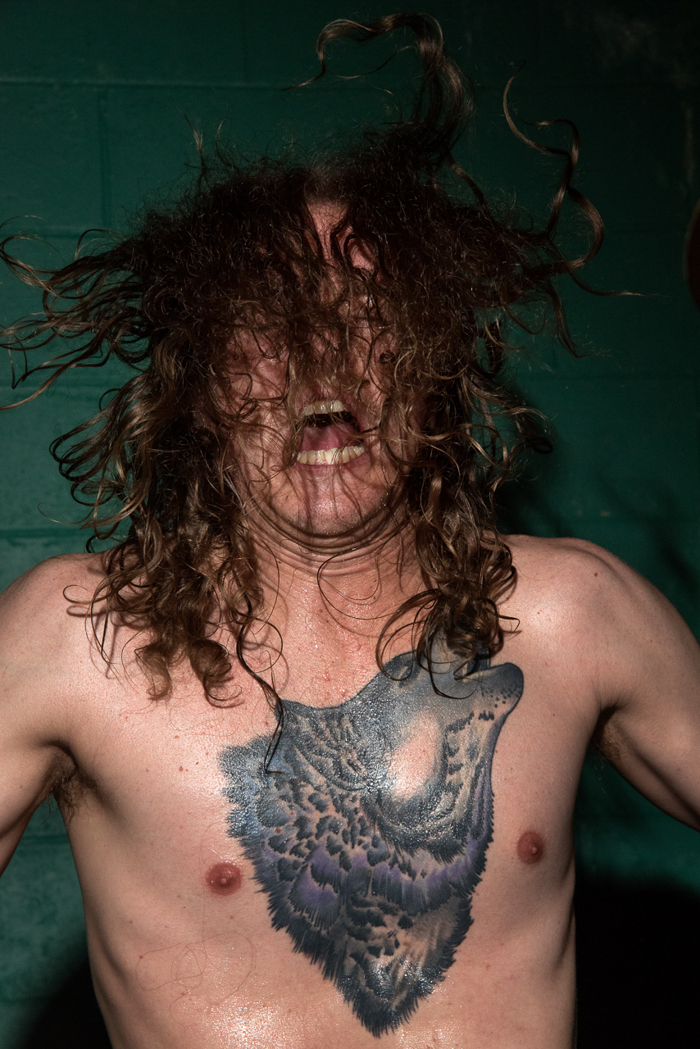
You talk about social problems and considering these issues, makes your work connected to that documentary tradition. It seems like you want to put your finger on social topics such as race inequality, poverty, drug and alcohol abuse and health system injustice. How do you approach these themes? Are you trying to formulate a critique of the way these issues are handled or just showing them without expressing a judgment?
My critique varies from project to project. Some recent work has looked at the way we come to know poverty through images and how that informs or distances us from really understanding what poverty is. This project does not take on a particular social issue. It is more about the photographer’s relationship as an outsider to regionalism and place. When you look at the history of colonialism and photography’s role in it then making documentary photographs becomes a social problem in and of itself.
There is something so beautifully romantic in the attitude these people have. They seem to get together and maybe get wasted or high on drugs because they want to escape a certain idea of American life they don’t seem to fit into. This might just be my own projection so please stop me if I’m wrong, but they seem to represent a generation of young American rebels that are trying to go against the social rules and environment they were born and grew up in but they know already they are destined to fail. Is this something true? Are you attracted to this and does this scenario relate in any case to your personal life and experiences?
What I found in Gainesville was an ability to live a decent quality of life without having to earn high-wages. Most of the people I photographed were tied in some way to a t-shirt factory in town. There is an incredible sense of community at the factory and through this community a wonderful music scene has emerged and is supported. I think most of the people I photographed in Gainesville are not so much rallying against social rules as they are trying to reorder the social rules to work for them.
How do you choose what community to work with? I guess I’m curious to know how you work, your process in choosing what you want to work on.
This was the first time a community was chosen for me. The gallery provided me with room and board for 12 weeks and asked me to make work about the people I met in Gainesville. Most of my work comes from an extensive process of research around issues that are of compelling to me. I can sit on an idea for years. I tend to like to wait for it to haunt or infect me. Then I know it is a project that I must invest time in. I was a bit concerned about having the geographical parameters set for me with this project but I came to see that there is something beautiful about coming into a region as an outsider, absorbing its strengths and weaknesses and attempting to communicate a representation of its people.
Do you mix other medium in your practice, such as video or text?
I just made my first feature length film, From the Study on Post-Pubescent Manhood, and have been working with sculpture, drawing and installation. I still consider photography the foundation of my work, but I like to think about the documentary tradition and it’s expanded trajectory in text, moving image, sound, objects and illustration.
Do you have any projects coming up?
I am in the 4th year of working on a project in central Appalachia, As it Was Give(n) to Me. I am leaving in a few weeks to spend 3 months on the road working on this project. Then I will come back to Los Angeles and prepare to publish a book of this work with Little Big Man books in 2016.
